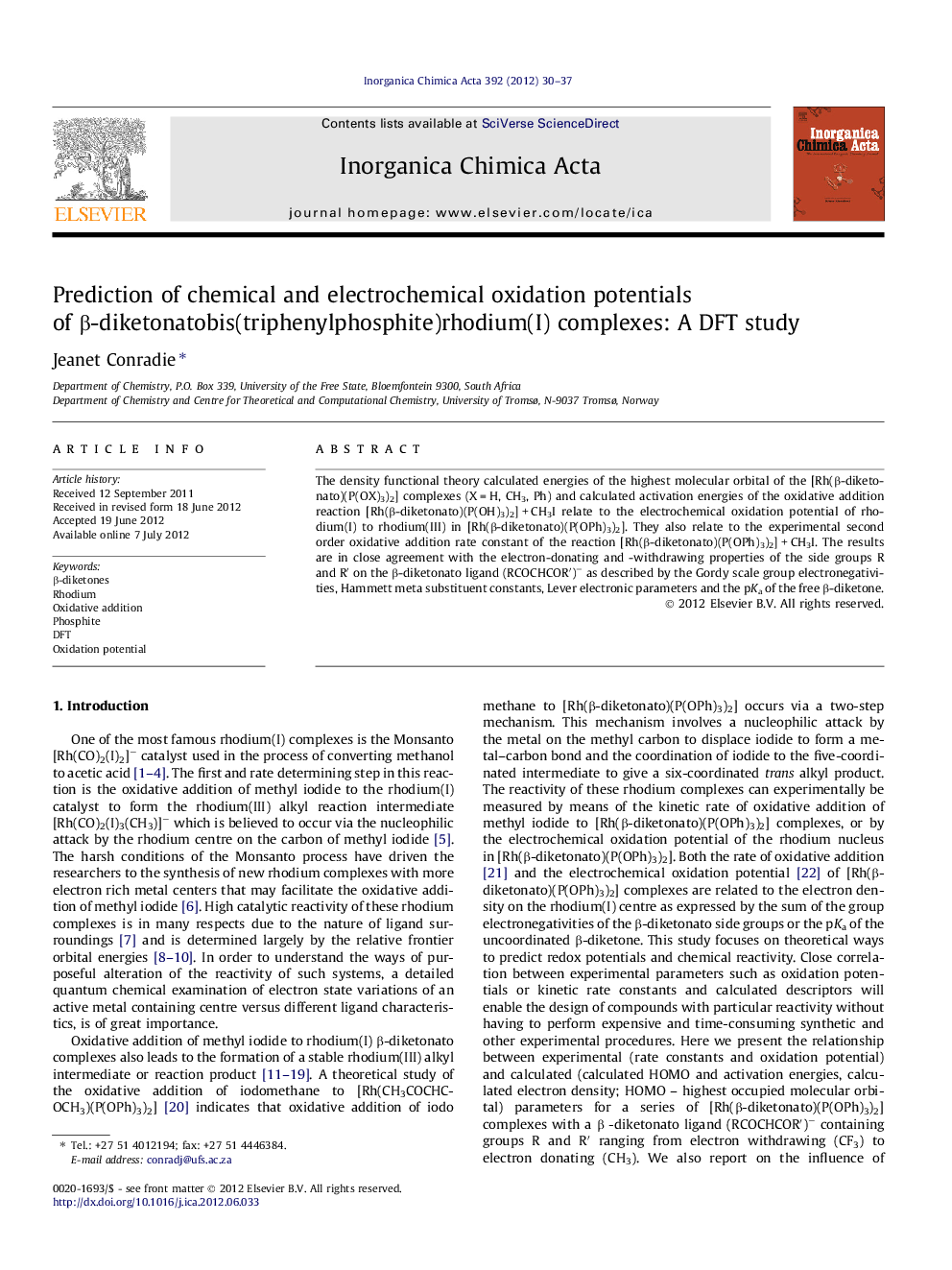| Article ID | Journal | Published Year | Pages | File Type |
|---|---|---|---|---|
| 1305978 | Inorganica Chimica Acta | 2012 | 8 Pages |
The density functional theory calculated energies of the highest molecular orbital of the [Rh(β-diketonato)(P(OX)3)2] complexes (X = H, CH3, Ph) and calculated activation energies of the oxidative addition reaction [Rh(β-diketonato)(P(OH)3)2] + CH3I relate to the electrochemical oxidation potential of rhodium(I) to rhodium(III) in [Rh(β-diketonato)(P(OPh)3)2]. They also relate to the experimental second order oxidative addition rate constant of the reaction [Rh(β-diketonato)(P(OPh)3)2] + CH3I. The results are in close agreement with the electron-donating and -withdrawing properties of the side groups R and R′ on the β-diketonato ligand (RCOCHCOR′)− as described by the Gordy scale group electronegativities, Hammett meta substituent constants, Lever electronic parameters and the pKa of the free β-diketone.
Graphical abstractThe density functional theory calculated HOMO and calculated activation energies of the oxidative addition reaction relate to the experimental electrochemical oxidation potential RhI/III and the experimental second order oxidative addition rate constant of the reaction [Rh(β-diketonato)(P(OPh)3)2] + CH3I.Figure optionsDownload full-size imageDownload as PowerPoint slideHighlights► DFT calculation of EHOMO, the energy of the HOMO of [Rh(β-diketonato)(P(OPh)3)2]. ► EHOMO relates to electrochemical oxidation potential. ► EHOMO relates to experimental oxidative addition kinetic rate constants. ► EHOMO relates to parameters that are related to the electronic effect of ligands attached to rhodium.
